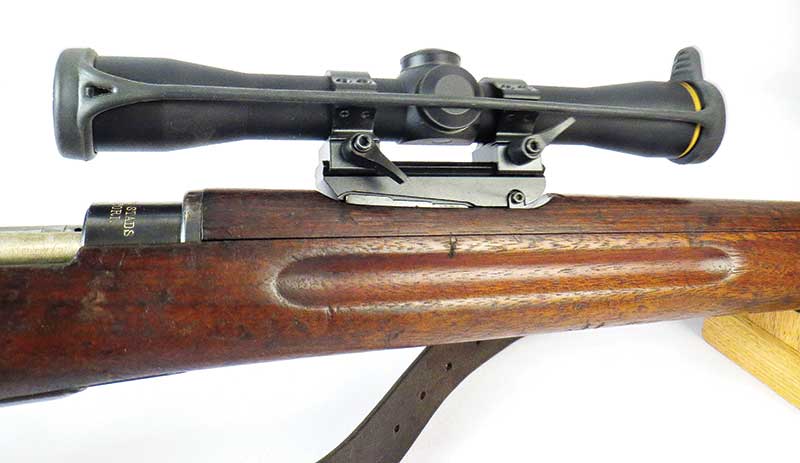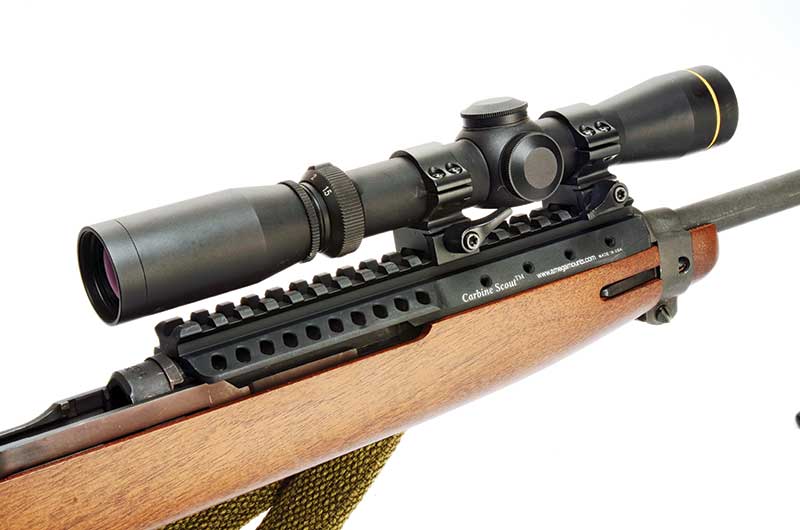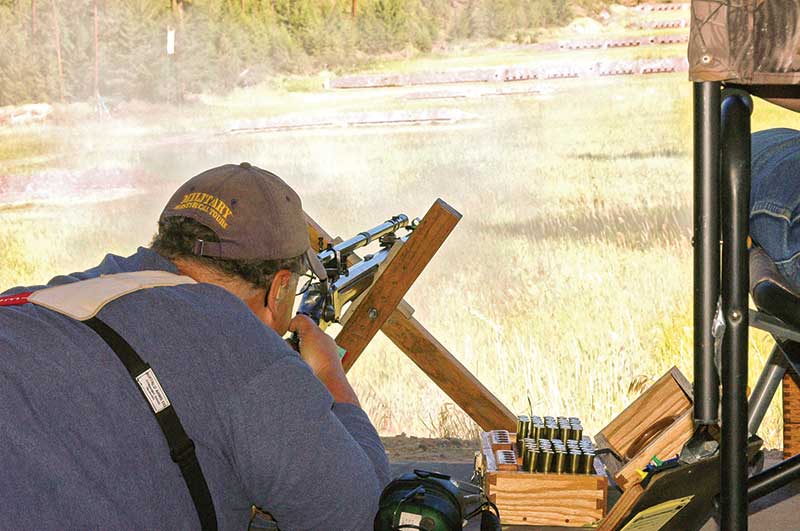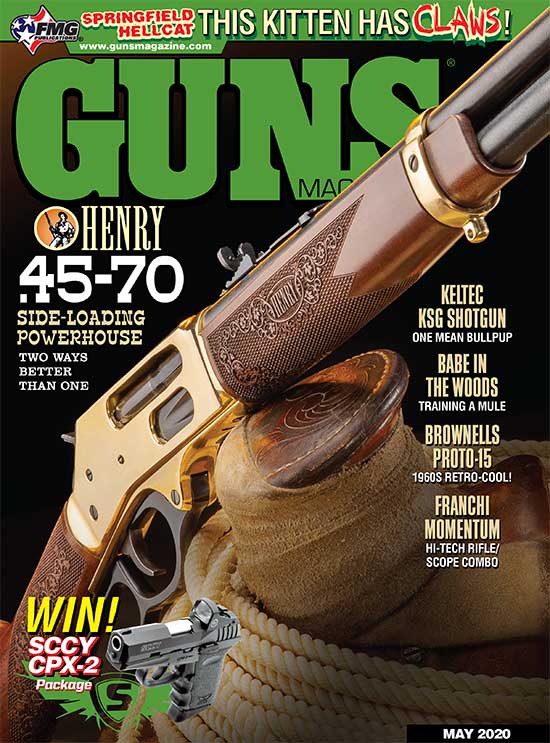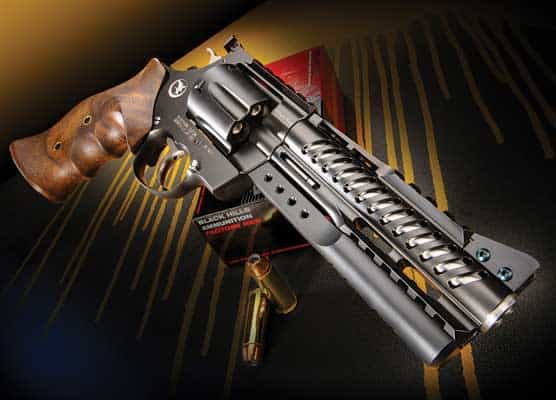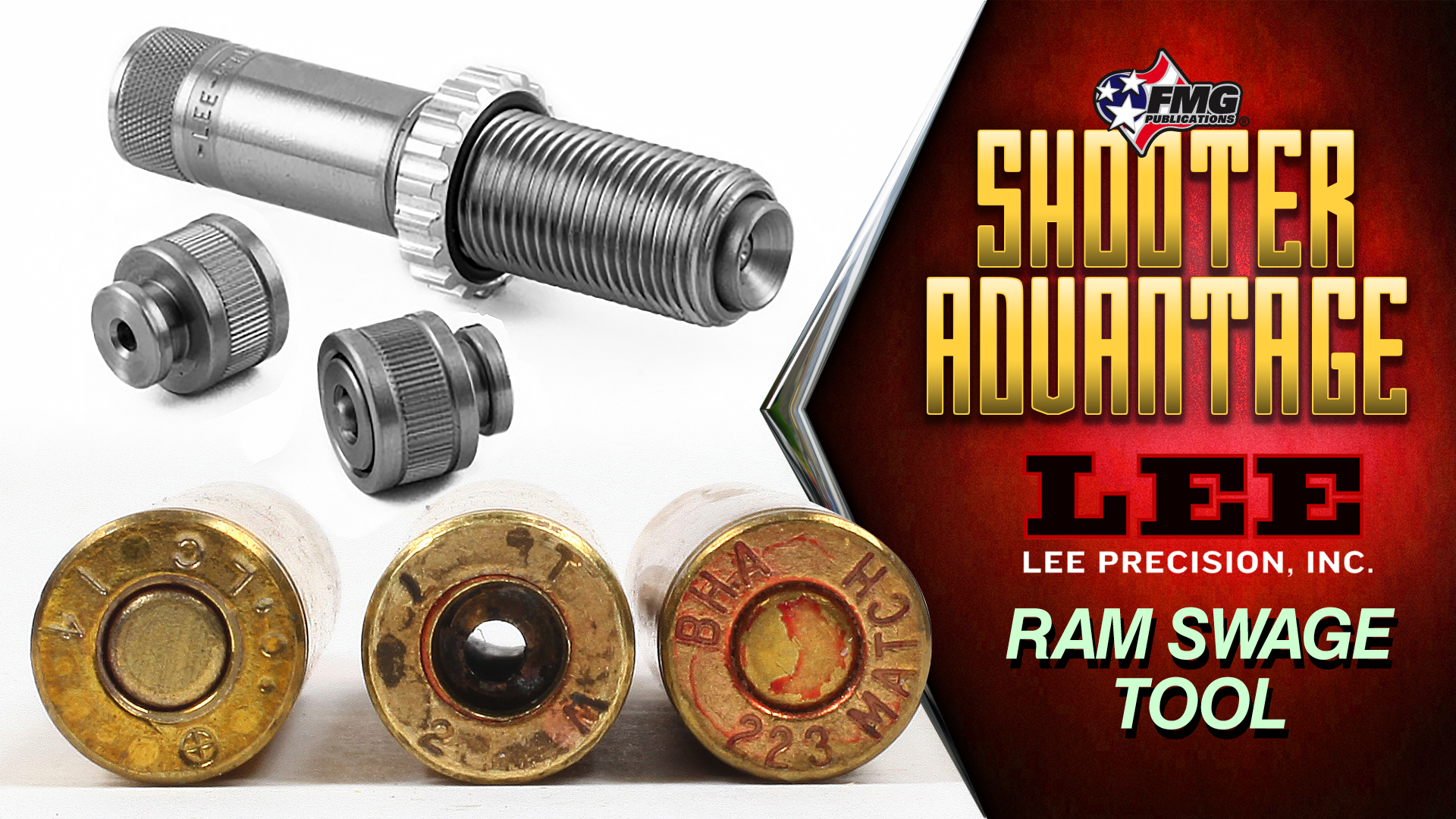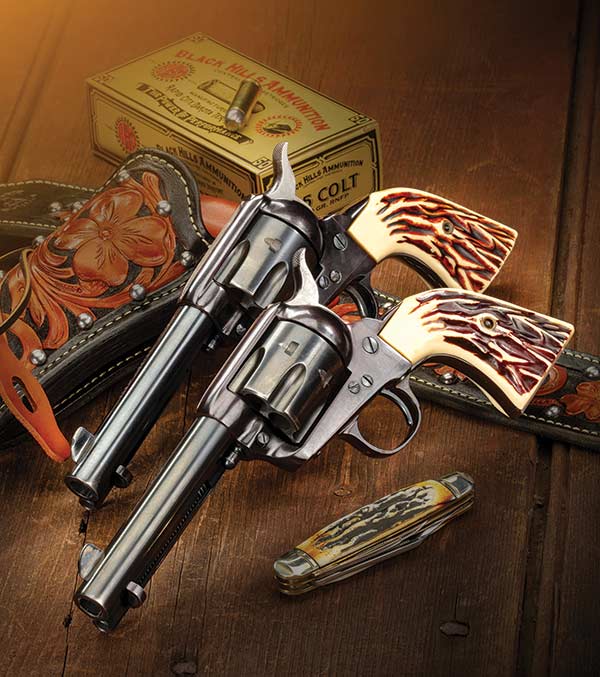Geezer Guns
Glass helps “Seasoned Citizens” keep shooting
An old saying goes, “Don’t let your mouth write checks your butt can’t handle.” In bygone days I used to brag to my friends in the BPCR Silhouette game, “I don’t need no stinking scopes.” This was because the NRA divided BPCR Silhouette into two separate but equal games — scoped and iron sight. The rules are the same except for sights so the two divisions can be fired side by side. Scores are divided with iron sight shooters against iron sight shooters and scoped shooters against scoped shooters.
The point was to keep as many people shooting as possible because many of the old-timers were dropping out due to aging eyes. I wasn’t having eye problems so I’d make fun of my compatriots who fired every match with their scoped rifles. All of a sudden in my late 60s seeing those tiny silhouettes at 200, 300, 385 and 500 meters through my iron sights got very difficult. My buddies got the last laugh.
The Sun Sets On Iron
Along with the BPCRs most of my World War II firearms collection has iron sights — either open or aperture types. Seeing their sights was a story of progression. In the beginning, the 18″ barrels of my M1 Carbines didn’t put the front sight far enough away for my eyes to focus upon but I could still see front sights on a 24″ barreled Model 1903 Springfield. Then they got blurry too, but I could still see the thin-blade front sight on my Model 1896 Krag infantry rifle with its 30″ barrel. Then, it grew blurry too.
Turning A Page
So what does an old geezer like me do to keep shooting some of my favorite firearms? You turn to optics, either the type you put on guns or the ones you put on your face. Actually, the ones on my face came first. They were needed for handgun sights. When the sights of my Colt SAAs, S&W Hand Ejector .44s, and various World War II military pistols turned blurry I turned to special glasses. My idea was to call around locally to eye doctors and ask this question, “Would it be possible to bring in an unloaded handgun so the doctor could fix me up with glasses specifically for seeing their sights?” In this day and age I was expecting to run into some balky receptionists. However, I was forgetting this is Montana. The gal on the phone said, “Hang on a minute and I’ll ask the doctor.”
He agreed. In an attempt to add a little flash to the occasion I took with me a nickel-plated Colt SAA .45. When I uncased it the doc said, “Oh, that’s nice!” and things went well from there. He made me a set of glasses with which handgun sights are razor sharp albeit the rest of the world is a bit blurry. Blurry targets can still be hit if sights are sharp. In those days I was active in the cowboy action game so I worried about transitioning from my single actions to lever gun sights. There certainly wasn’t time to take off one set of glasses and put on another.
I needn’t have worried. A lever gun’s front sight is about the same distance away as single action revolver’s sight and a fairly spacious peep sight aperture needs no attention because the eye automatically centers the front sight. So my special shooting glasses served me well.
Glass On Guns
Next come optics on the guns. Of course most sporting rifles nowadays come drilled and tapped for scope mounting. This genre of rifle is a no brainer but how about vintage military rifles? Most have open rear sights and less-than-target-grade fronts. For instance, I’m sweet on M1 .30 Carbines. Of course they all come with peep rear sights but there is a better way to make them accurate shooters.
This is where the Scout Rifle movement has helped. The current Inland Mfg. Company of Ohio, makers of new M1 .30 Carbines, offers a handguard with rail. I bought a 4X Leupold Scout Scope, mounted it on their rail handguard and now have a “Scout M1 Carbine.” It makes a delightful plinker/small game carbine.
Saddle It Up
An outfit I found on the Internet named Accumounts Inc. offers scout scope mounts accompanied by rings easily fitted to many types of bolt action and military rifle rear sight bases. The raising ladder part of the sight is dismounted by drifting out a pin and the Accumount base pins fit right in their place. I did this with a Swedish Model 1896 and a Japanese Type 96 Arisaka, both chambered for 6.5mms of their respective nations. Instantly — well, almost — I had retro-Scout Rifles.
The whole point of this column is if you really love to shoot, and (like me) prefer non-run-of-the-mill guns, then don’t give up when your eyes age. There are ways to keep shooting.

